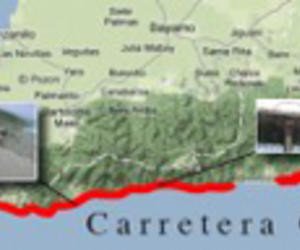Cuba taking climate-change measures
- Submitted by: manso
- Politics and Government
- 03 / 19 / 2011

The government should regulate new construction close to the sea, begin beach replenishment, and recover and protect mangroves, a comprehensive government study about Cuba’s exposure to the effects of climate change suggests.
Rising sea levels justify “the need to design guidelines to mitigate the effects of rising sea levels,” Deputy Environment Minister Fernando González Bermúdez told Raúl Castro and the Council of Ministers, according to Granma. González made the remarks while presenting the results of a four-year long, comprehensive study about the dangers and coastal vulnerabilities of the island.
The study was led by the Ministry of the Environment (CITMA) and included 138 experts with 16 research institutions. Further research will be led by the Instituto de Planificación Física and its provincial and municipal offices, González said. Among others, the ministry is compiling an atlas of the spots that are most vulnerable to climate change and other natural disasters.
As an example for mitigating measures, he cited the cases of Santa Cruz del Sur and Guayabal, two coastal towns that are being rebuilt further inland after they had been devastated by hurricanes in 2008.
Also, CITMA is urging planners to rebuild a coastal highway in Southeastern Cuba considering a scenario of accelerated climate change in 50-100 years in their calculations. Facing a cost of tens of millions of dollars in the reconstruction of what used to be an economic-development showcase of the Revolution, the government wants the rebuilt coastal highway linking the provinces of Granma and Santiago to be moved away from the sea where it is possible.
The Carretera Granma, built in the 1970s to boost living standards in the impoverished Sierra Maestra and coastal villages, has been heavily damaged by an ever-rising number of storms, river floods and mudslides. Three bridges are about to collapse, four are heavily damaged, and 115 kilometers (71.5 miles) of road have partially disappeared, due to floods and mudslides.
No engineer “dares providing a cost estimate,” a article in Granma said last year about the road project. Just fixing the segment from Granma province to the town of Chivirico, half-way to Santiago, could cost $32 million. But that doesn’t factor in possible route changes, the newspaper said.
The Carretera Granma is arguably the most scenic highway in Cuba. A half-dozen tourist hotels are located along the route. Some 150,000 tons of goods move along the road every year.
Source: www.cubastandard.com/2011/03/19/cuba-taking-climate-change-measures/
Comments